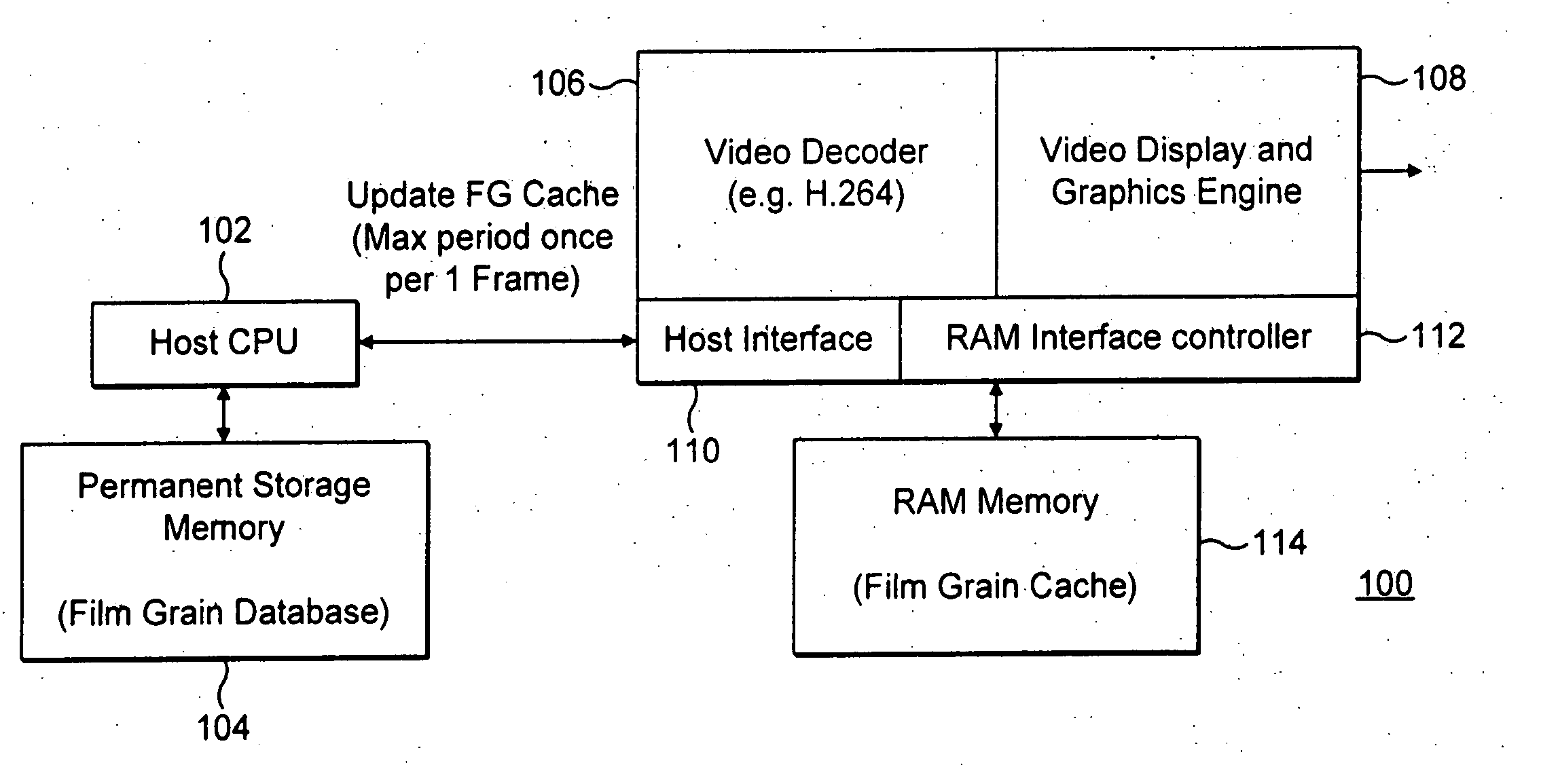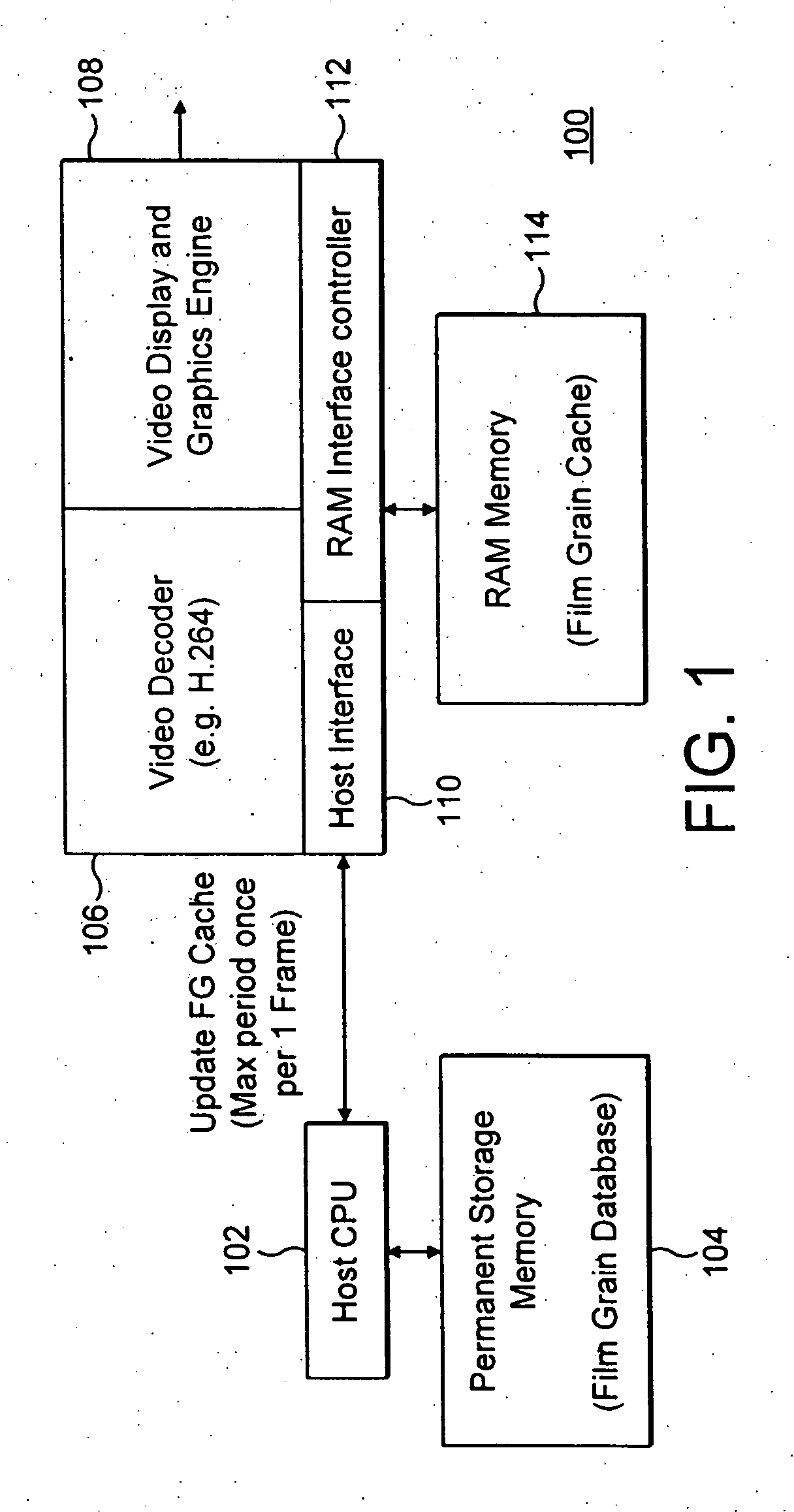Methods for determining block averages for film grain simulation
- Summary
- Abstract
- Description
- Claims
- Application Information
AI Technical Summary
Benefits of technology
Problems solved by technology
Method used
Image
Examples
first embodiment
[0033] In the present invention, the block average of a decoded picture is determined during the display process. In some implementations, a decoder may already read decoded picture blocks (e.g., 8×8 blocks) from external memory (e.g., RAM) during the display process. In this case and in accordance with the present invention, the block average (e.g., 8×8 block average) is performed in the display pipeline. In accordance with the present invention, it is possible to compute the block average (e.g., 8×8 block average) during the display process even if pixels are read in raster-scan order (i.e. left to right, top to bottom). For example, FIG. 4 depicts a flow diagram of a method for the computation of block averages during the decoding process while reading pixels in raster-scan order in accordance with one embodiment of the present invention.
[0034] In the method 400 of FIG. 4, an image is processed in groups of 8 lines, and the block average for all 8×8 blocks in the group of 8 lines...
second embodiment
[0035] In the present invention, the block average of a decoded picture is determined during a video decode process (i.e., during the H.264 decode process). During the video compression decode operation the 8×8 block samples are available. For example, FIG. 5 depicts a flow diagram of a method for the computation of block averages during the decode process in accordance with one embodiment of the present invention. The method 500 of FIG. 5 illustrates the combining the decoding of a video frame with the computation of the block average of each block (e.g., 8×8 block). The method 500 of FIG. 5 begins by decoding a macro-block of samples (i.e., most video coding standards, such as MPEG-2 and H.264I MPEG-4 AVC, use 16×16 macroblocks). Next, the block average of each sub-block (e.g., 8×8 sub-block) is computed and stored into memory. This approach minimizes the amount of data that has to be read from memory because the values required to compute the block average are readily available d...
PUM
 Login to View More
Login to View More Abstract
Description
Claims
Application Information
 Login to View More
Login to View More - R&D
- Intellectual Property
- Life Sciences
- Materials
- Tech Scout
- Unparalleled Data Quality
- Higher Quality Content
- 60% Fewer Hallucinations
Browse by: Latest US Patents, China's latest patents, Technical Efficacy Thesaurus, Application Domain, Technology Topic, Popular Technical Reports.
© 2025 PatSnap. All rights reserved.Legal|Privacy policy|Modern Slavery Act Transparency Statement|Sitemap|About US| Contact US: help@patsnap.com



